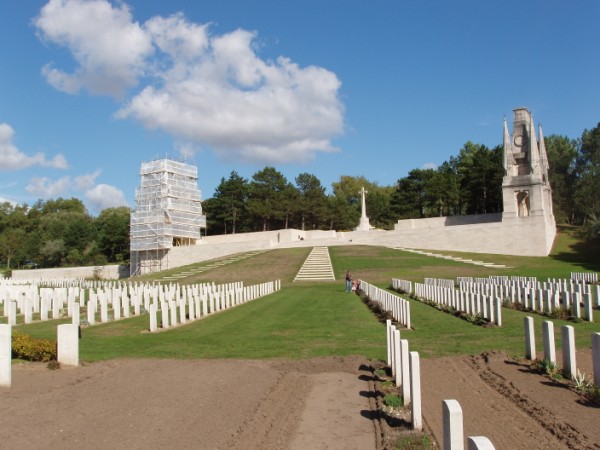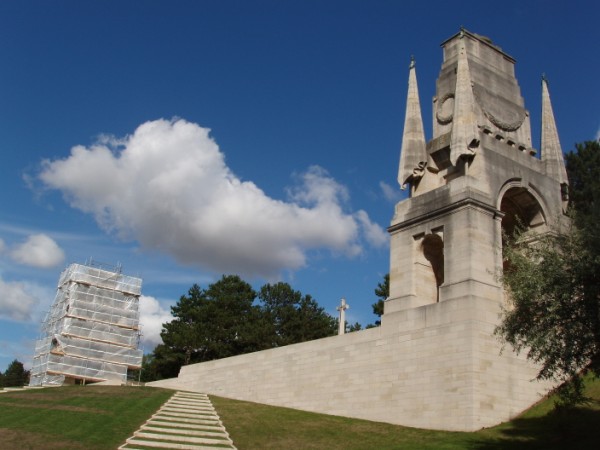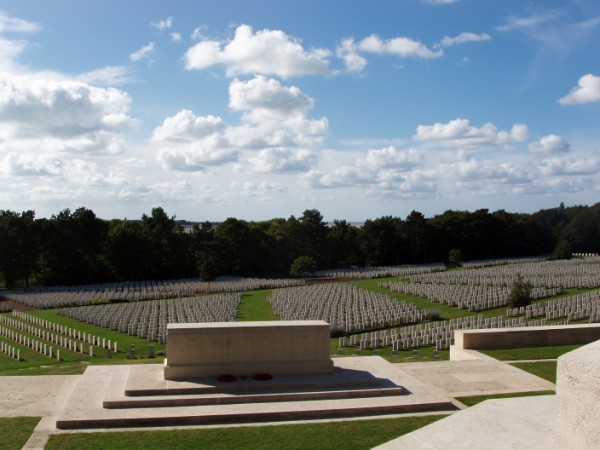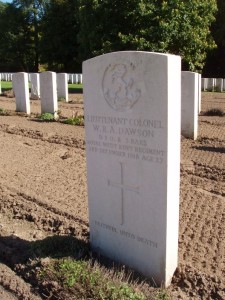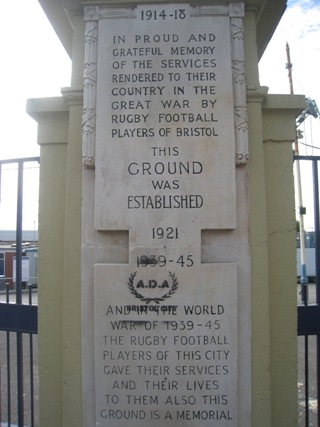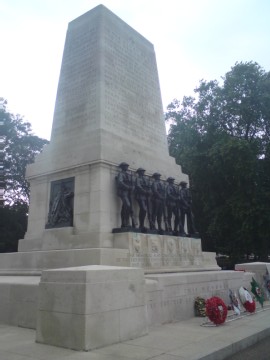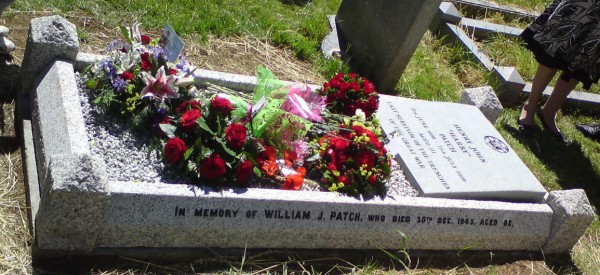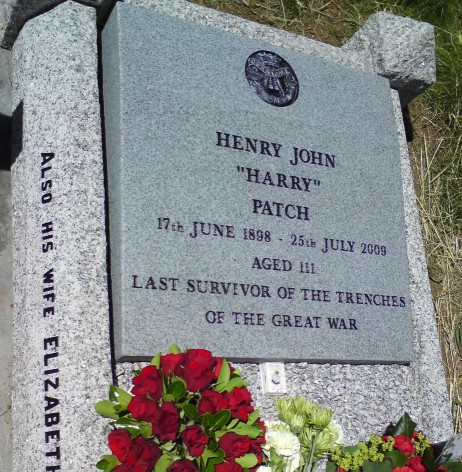Archive for the ‘Miscellany’ Category
The past week has been very busy with preparations for the talk in Arras at the Wellington Quarry that Peter Barton and I are doing on 12 November in French to local media & invited guests. Peter is doing 40 minutes and I am doing 5 minutes but he can speak French and mine is very GSCE-level so I thought it a fair trade off!
We are meeting Rachel Gray, great-niece of Percy Clare, 7th East Surrey Regiment whose hitherto unused memoir was used extensively in the Arras panorama volume. It will be a tremendous opportunity to show Rachel the battlefield where Percy fought in April & May 1917 and I should imagine it will be an emotional day all round. In my experience his memoir is unsurpassed in detail and we will literally be able to ‘walk in his footsteps’. The Bucks Herald are running this story for us as Rachel lives in their readership area. Many thanks to Nicholas Moore for his help with this. Link to be included when it goes online.
I have also been in touch with the Bristol Evening Post who are coming around on Thursday. Whilst on the archaeological dig on the Somme in May looking for parts of the Livens Large Gallery Flame Projector with Peter Barton buy xanax chicago & Tony Pollard (Centre for Battlefield Archaeology) we explored some caves under one of the churches in a nearby village. These caves were used as a refuge from German shelling by British soldiers – a safe and dry place to sleep. The walls are literally festooned with graffiti – names of the men who were billeted in these caves. One of the names particularly caught my eye – that of a man from just outside Bristol who had written his name, unit and home village as well as the date – 30 November 1916. I did a bit of research and found that, sadly, he was killed in March 1918. I will post more details on this plus the picture when the story is published.
The period around Armistice Day is always a busy time with the Great War in so many people’s minds through the Poppy Appeal. Coupled with upcoming research at Kew and the preview of the new ‘Valour’ Victoria Cross exhibition at the Royal Engineers Museum on 11 November as well as a battlefield trip this year is no exception. The strangest thing will be not being in Ypres (Ieper) on 11 November – I think I have only missed one year in the last ten.
Etaples Military Cemetery
On way back from family holiday in the Dordogne we stopped the final night at Le Touquet. Being so close to Etaples I couldn’t resist a visit to the huge military cemetery there, the largest in France with 11,479 casualties buried here. This is only marginally smaller than the number buried at Tyne Cot but I would venture it receives a fraction of the number – there were only a couple of other visitors whilst we were there. I have been a number of times before on battlefield trips and have always battled the rain and cold but was blessed with wonderful weather on Saturday. It looks like maintenance work is being carried out on the entrance structure and some areas were being resown with grass seed. It really is well worth a visit and is especially poignant that one can see the sea from the cemetery entrance. For so many men it was a case of so near and yet so far.
In fact, next time I am heading to the Somme I think I will take the A16 this way from Calais – via Wimereux and Etaples and then stopping at Montreuil to see where Sir Douglas Haig had his headquarters and then continue down to Amiens and into the battlefields that way. It is a fascinating route and surprisingly pretty too!
Whilst at Etaples I really wanted to pay my respects at the grave of Lt Colonel William Dawson, DSO & 3 Bars, 6th Queen’s Own (Royal West Kent Regiment) who is buried in XLV. A.10. Dawson was quite a man – I understand that he refused promotion above the level of battalion command and was entitled to wear seven wound stripes. He is mentioned in Alan Thomas’ wonderful book, ‘A Life Apart’. The one bit of that book that always struck me was when Thomas referred to Dawson’s bravery and reaction to shellfire. Sadly Dawson was hit by shellfire in October and died in December 1918. Truly a brave man.
Alan Thomas wrote:
I never believed in a man bearing ‘a charmed life’. If I had, I should have put Dawson high on the list. So, I think, would most of the battalion. For when you were with Dawson you felt safe. Often I walked by his side along the stickiest of roads and through the unhealthiest of trenches, and because he was with me I did not feel afraid. Had I been alone, I could scarcely have dared to creep along even on all fours. But he would stride buy generic alprazolam online ahead, with his pipe in his mouth, as confidently as if he had been walking down Bond Street. (As a matter of fact, he would never have been seen in Bond Street with a pipe on: his ‘West End’ standards would have seen to that.) Did he know what fear was? I often wondered. Then one day, in 1917, I came across him alone. Our lines were being heavily bombarded and I was going along my sector to see if the men were all right. Turning into one of the bays, I ran into Dawson. He was standing in an odd position: instead of leaning with his back to the side of the trench, he was standing facing it, gripping the mud wall with crooked fingers. His expression was drawn, as though he were in pain. On seeing me, he relaxed and tried to laugh. It was the laugh of a nervous, frightened man. I gazed at him, wondering what had happened. For a moment I thought he might have been wounded.
‘Are you hit, sir?’ I asked.
‘Hit?’ He repeated the word as though he did not know what I meant. Then he went on: ‘I suppose it’s never occurred to you that I could be frightened?’ He was looking at me squarely and had got possession of himself again. I said the idea had never occurred to me.
‘Do you think I like these bloody bombardments,’ he went on. I told him that I didn’t think that, either, but that I had never seen him afraid.
‘Well, you have now,’ he observed. ‘It was because I was afraid that I was clinging to this bloody trench.’
‘I don’t blame you,’ I said. ‘I’m frightened myself.’
‘But when I’m with other people,’ he said, ‘I don’t show the fear I feel, that’s all. Nor do you have to, either.’
‘No, sir,’ I said, feeling proud that he should seem to place me in the same category as himself: that is, the category of the really brave who feel afraid but do not show it.
‘But I don’t mind telling you now –’ he added, but evidently thought better of it, for he broke off and with a gruff, ‘Come on’, led the way along the trench in his usual confident way. And, walking behind him, I felt safe.
Well, that was Dawson – or some idea of him, at least.
Copyright: Alan Thomas, A Life Apart, Victor Gollancz, London, 1968.
Graffiti daubing on Memorial Stadium gates
The Memorial Stadium was built to honour the memory of the rugby union players of Bristol who were killed during the Great War and is now the shared home of Bristol Rugby and Bristol Rovers FC.
I was most saddened to see this. As a season ticket holder for the rugby club I always figuratively doff my cap when passing the gates. Mindless stupidity as ever in cases such as these. More details are available on the Bristol Rovers website.
The Bristol Evening Post says that the vandals returned last night and plastered the South Stand with graffiti – even painting the nearby toilets and pasty stand. The mind boggles at the pathetic childishness of some people. This is a good example of how proper education on the sacrifices made in the Great War is still so important.
Guards Memorial, Horse Guards Parade
Whilst up in London earlier this week attending the private view of the Armed Forces Art Society exhibition at the Mall Galleries I took the opportunity to have a quick look around Horse Guards Parade.
Having moved from London in 2003 it had been some time since I had been in that part of the capital. The most recent visit to the area was in January 2009 to hear the most uninspiring Franky Bostyn lecture on tunnelling in the Great War at the Guards Chapel on Birdcage Walk. This was organised by the Guild of Battlefield Guides and the chapel had the usual feeling of an officers mess. I well recall the most exciting aspect of the evening being when the acknowledged underground expert Johan Vandewalle (who had come over from Belgium) challenged Bostyn on his use of Johan’s written and visual material for his lecture without first obtaining Johan’s permission. That ruckus certainly woke up some of the old boys. Surely the highlight of a most dreary hour and a half?! Johan’s letter to the Belgian Ambassador can be read here. Sadly he never received a response from the Ambasador or the Guild.
So, as I recalled this event I strolled over to Horse Guards Parade, killing time before I went to the exhibition.
I walked past the National Police Memorial which I recall reading about when it was unveiled. Next, set on the very edge of St James’s Park is the wonderfully aesthetic Guards Memorial. Having travelled regularly to the battlefields over the past few years with an ex-Scots Guardsman I have been immersed in many deeds of that fine bunch of men. This highly impressive memorial is constructed from Portland stone and was unveiled on 16 October 1926 by the Duke of Connaught. It is dedicated to the five Foot Guards Regiments of the Great War – Grenadier, Scots, Welsh, Irish and Coldstream. There are five beautifully sculpted bronze figures denoting Guardsmen from the five regiments.
The Inscription on the memorial above the bronze figures reads:
To the Glory of God. And in the memory of the Officers, Non-Commissioned Officers and Guardsmen of His Majesty’s Regiments of Foot Guards who gave their lives for their King and Country during the Great War 1914-1918 and of the Officers, Non-Commissioned Officers, Men of the Household Cavalry, Royal Regiment of Artillery Corps, Royal Army Medical Corps and other Units while serving the Guard’s Division in France and Belgium 1915-1918, fell with them in the fight for the World’s Freedom.
This Memorial also commemorates all those members of the Household Division who died in the Second World War and in the service of their country since 1918.
The two sides of the memorial list the units in the Guards Division – each battalion on one side – but also the Divisional Troops including Artillery, RAMC and RE Field Companies (good to see 76 Field Company RE named – we used extracts from the diary an officer who served with that company, Lieutenant Harold Ridsdale, in the Passchendaele panorama volume) as well as 46th Mobile Veterinary Section of the RAVC (Royal Army Veterinary Corps).
The final side had the numerous Battle Honours listed. They are:
Mons, Retreat from Mons, Landrecies, Marne 1914, Aisne 1914, Ypres 1914, Langemarck 1914, Gheluvelt, Nonne Bosschen, Givenchy 1914, Cuinchy, Neuve Chapelle, Aubers, Festubert 1915, Loos, Mount Sorrel, Somme 1916, Ginchy, Lesboeufs, Flers-Courcelette, Morval, Ypres 1917, Pilckem, Menin Road, Poelcappelle, Passchendaele, Cambrai 1917, Bourlon Wood, Gouzeaucourt, Somme 1918, St Quentin, Bapaume 1918, Arras 1918, Lys, Hazebrouck, Albert 1918, Scarpe 1918, Drocourt-Queant, Hindenburg Line, Havrincourt, Canal Du Nord, Cambrai 1918, Selle, Sambre, Mauberge, France & Flanders 1914-1918.
It really is a most impressive memorial and I would certainly suggest a visit if in the area. It is worth spending a few minutes remembering this fine body of men serve with such distinction on the Western Front throughout the war. Further details can be found at The Guards Museum which is a few minutes walk away on Birdcage Walk.
Harry Patch’s new gravestone
Had Harry Patch still been living he would have celebrated his 112th birthday today. It therefore seemed apt that a short service of dedication was held this morning at his new gravestone in the beautiful surroundings of the churchyard of the Church of St. Michael and All Angels at Monkton Combe.
Along with about 20 others of friends and family I was delighted to attend and after the short service of dedication for the headstone presided over by Rev. Paul Langham we laid some flowers and chatted about our memories of Harry. He was such a part of our lives and it seemed strange in meeting up with his friends and family buy real tramadol online that he wasn’t there. Then again, as was noted by some, perhaps he was!
The gravestone is simple – no doubt just how Harry would have wanted it. Apparently his grave receives a good number of visitors and I find it tremendous that his grave (and that of his parents) is now so well marked and looked after. Well done to the wonderful David Isaacs for organising this all so well.



